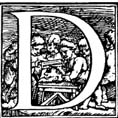
e humani corporis fabrica was printed in 1543 – the same year as Nicolaus Copernicus’ On the Revolutions of the Celestial Spheres revolutionized the science of astronomy. The intellectual climate of the Renaissance was welcoming to the humanists; that is, people who were rejecting dogma and pursuing original, secular, critical thought.
“The Fabrica came at the high waterline of medical humanism’’, said Garrison, “when the authority of ancient knowledge was never greater but faced new challenges from anatomists using direct observation instead of book knowledge”.
The Fabrica was immediately successful when it was published. If the old chestnut that “there’s no such thing as bad publicity” holds, then the Fabrica perhaps garnered even more attention when it infuriated Vesalius’ prominent former professor Jacob Sylvius in Paris.
Sylvius ranted against Vesalius and his magnum opus, even writing angry letters to the emperor urging him to destroy the Fabrica, but to no avail.
Beyond medicine, Vesalius’ work provided painters and sculptors with templates for visualizing the curves and forms of the bones and muscles of the human body. Leonardo da Vinci had sketched human anatomy in work that was only published much later, but not to the thorough degree of Vesalius. Thus, Vesalius shaped the discipline of art as well as medicine.
